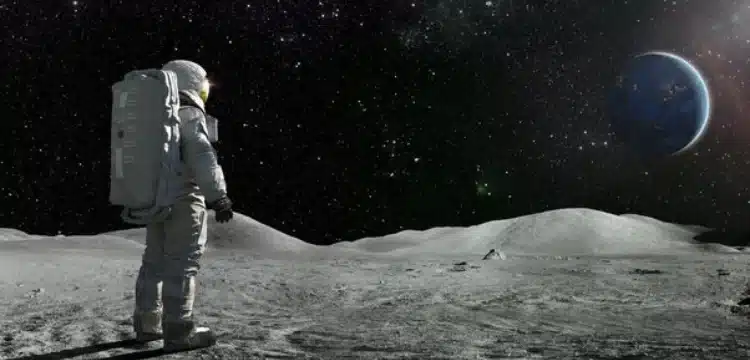[vc_row][vc_column][vc_column_text dp_text_size=”size-4″]Prominent nations are aiming for the Moon’s south pole. India and Russia experienced recent attempts, while the U.S. targets a crewed landing by 2025. China, too, seeks the same region for its robotic lander. The renewed focus stems from political motivations, echoing the past.
A key factor is the discovery of water ice in the Moon’s southern pole craters since the last lunar landing. This discovery reignites interest. NASA views the Moon as a stepping stone to Mars, both technologically and strategically. It plans to use the Moon and the Gateway space station for Mars-bound missions.
Read more : India Makes History by Landing on South Pole Region of Moon
China, India, and Russia are also interested in the south pole for prestige and Mars-related ambitions. The rugged terrain conceals valuable water ice. Establishing a lunar base benefits from local resources like water, fuel, and air. This is cost-effective compared to launching from Earth.
China, India, Russia, and the U.S. lead the lunar exploration. Collaboration is prominent, even with political tensions. The timeline includes planned missions and landings, with 2035 aiming for an International Lunar Research Station.
This modern race has parallels to the Cold War’s space race and earlier terrestrial exploration, echoing Mark Twain’s sentiment that history rhymes.
What makes the lunar south pole significant?
This area features rugged, heavily cratered terrain, a stark contrast to the smoother lava plains explored during the Apollo missions in the 1970s. Yet, the deep craters near the pole likely hold the solution for a self-sustaining Moon base: water ice, found in the permanently shaded depths of these craters.
Read more : Pakistans Space Mission With Financial Hurdles
Establishing a lunar base benefits greatly from frozen water. Apart from its potential to be thawed and consumed, it can be separated into molecules to produce liquid hydrogen and oxygen, essential components for rocket fuel and breathing.
While these resources are available on Earth, transporting water, especially, is weighty and thus costly in terms of finances and fuel. For a lunar base, acquiring water, rocket fuel, and air from nearby craters is much more economical than launching them from Earth. Mars missions can also benefit by accessing supplies from an orbiting station like Gateway, avoiding the need for Earth’s stronger gravitational pull during launches.
Which nations are aiming to investigate the Moon’s southern pole?
The primary competitors include China, India, Russia, and the United States. However, these countries intend to collaborate with other nations. For instance, China’s Chang’e-6 lander will incorporate tools from France, Italy, Sweden, and Pakistan. India’s upcoming lunar mission will be a cooperative venture with Japan. NASA’s Artemis program involves partnerships with the European Space Agency (ESA), as well as the space agencies of Germany, Israel, Italy, and Japan.
Here’s a chronological outline:
– 2024: NASA’s Artemis II mission will have astronauts orbiting the Moon. China’s Chang’e-6 lander will collect samples from the Moon’s far side.
– 2025: NASA plans to launch the first two modules of the Gateway space station. Artemis III will see astronauts landing near the Moon’s south pole.
– 2026: China’s Chang’e-7 mission aims to land near the lunar south pole using a lander and drone.
– 2027: Russia’s Luna-26 mission, contingent on Luna-25’s recovery, will orbit the lunar poles.
– 2026-2028: India’s Chandrayaan-4 mission, in collaboration with Japan, is set to land a rover near the Moon’s south pole.
– 2028: China’s Chang’e-8 mission will test 3D printing technology for lunar buildings and land near the south pole. NASA’s Artemis IV will send more astronauts to the Moon and deliver the main habitat module to Gateway.
– 2029: NASA’s Artemis 5 mission aims to deliver additional astronauts and a lunar rover to the Moon.
– 2029-2031: NASA intends to transport four more modules to Gateway and send more astronauts to the Moon in the Artemis 6 mission.
– 2035: China and Russia plan to jointly establish the International Lunar Research Station.
Given the geopolitical tensions between China, Russia, and the United States, especially as China and the U.S. target the same landing sites for Chang’e-7 and Artemis III, the global competition to secure landing sites and establish lasting bases at the Moon’s south pole could be highly strained.[/vc_column_text][/vc_column][/vc_row]











